Sardinia, an island at the centre of the Mediterranean, offers visitors unique panoramas and unspoilt nature. The land amazes with its natural contrasts: crystal-clear sea, dreamy coves, villages of ancient traditions, and unique monuments, witnesses of an ancient culture.
Let's discover 10 unmissable places in Sardinia for a mix of nature, history and culture!

Sardinia's 10 unmissable places
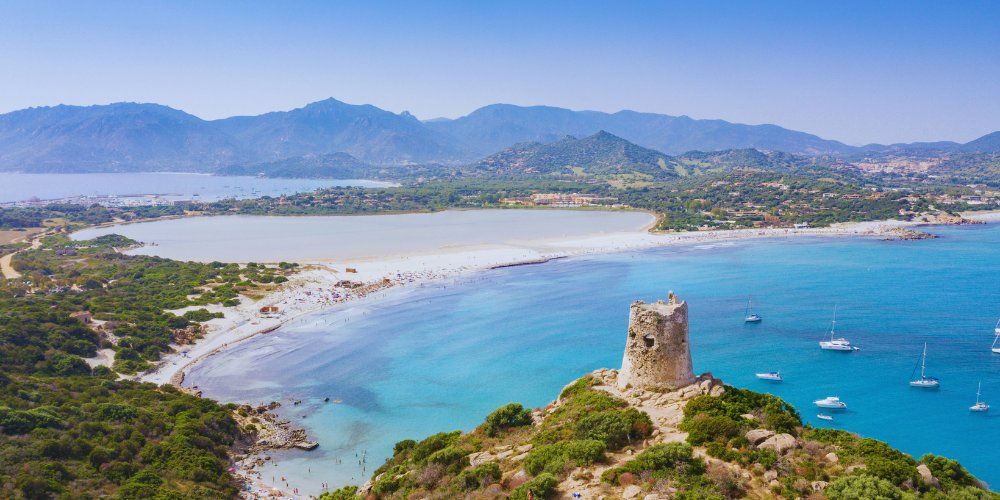
What are the unmissable places to see in Sardinia?
Whether you love beaches and sea, history and local traditions, or adventurous trails, here you will find many places for a holiday rich of different experiences.
This large island, the second largest in the Mediterranean, so famous for its beautiful beaches and crystal-clear sea, is the right destination for a good combination of nature and culture.
Between one beach and another, you will encounter elegant towns, picturesque villages, archaeological sites, old abandoned mines, and many paths that will lead you to discover the Sardinian hinterland and the most authentic Sardinia.
Sardinia will also surprise you with its ancient popular culture, which you will find in the most important festivities and the many festivals all over the island.
By participating in festivals and cultural events, you will have the opportunity to learn about local traditions, Sardinian music and tasty local products.
The most practical and fastest way to reach Sardinia is by plane. The main airports on the island are Cagliari, Alghero and Olbia.
Cagliari airport is the busiest and serves the entire southern part of the island and has connections to the main national and European airports.
Alghero and Olbia airports serve the northern part of the island and have connections to major national airports.
Major low-cost airlines such as easyjet and ryanair have flights to Sardinia.
Those who prefer to reach the island by their own means can use ferries. The nearest ports are those of Civitavecchia and Livorno.
The duration of the journey varies depending on the type of ferry and the proximity of the port. Trips from the most distant ports, with ferries that are not among the fastest, can take 12 to 15 hours.
Those leaving from closer ports and using faster ferries can take 5 to 7 hours.
If you have a stopover in Rome or Milan on your way to Sardinia and want to take a few days to visit the eternal city and the fashion capital, take a look at the Visit Rome pass and the Milan pass.
And now, from Cagliari to Alghero, passing by the archaeological site of Su Nuraxi Barumini and the Gorropu Gorge, let's discover the 10 unmissible places in Sardinia!
10. Archaeological site: Su Nuraxi di Barumini
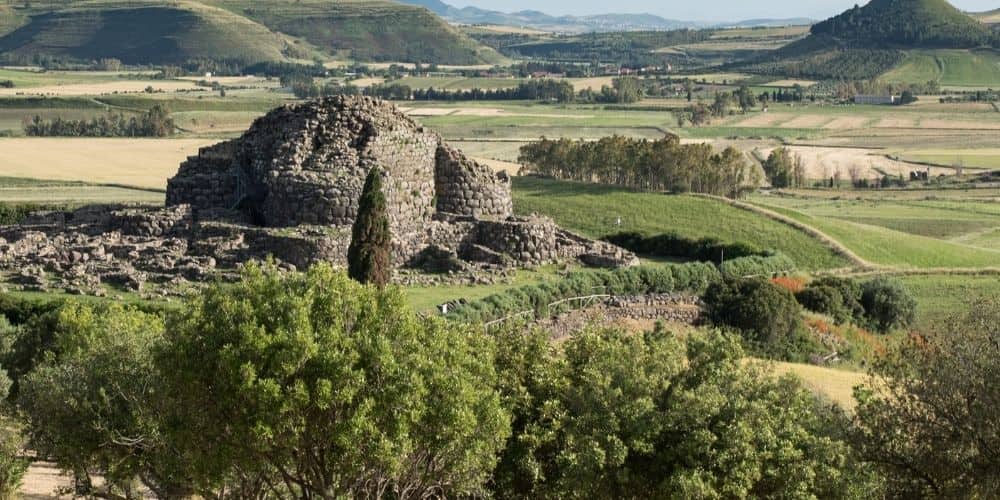
Located in the heart of Sardinia, the territory of Barumini, in the province of Medio Campidano, is a special place, of great importance since ancient times, due to the presence of the nuragic village Su Nuraxi, discovered in the 1950s.
This large village of huts, developed around a large Nuraghe, between the 13th and 6th centuries BC, has been a Unesco World Heritage Site since 1997.
The Nuragic civilisation developed in Sardinia over a period of about 1000 years (1500-500 BC) and takes its name from the most characteristic monument of the time: the Nuraghe, an ancient stone tower, similar to a medieval castle but much older, used to defend the surrounding territory.
More than 7000 nuraghi have been found in Sardinia and Su Nuraxi is one of the largest and best preserved nuragic villages in the region.
Sardinia is famous for its Nuraghi, which are the largest and best-preserved megalithic monuments in Europe.
9. The Caves of Neptune

About 24 km from Alghero, in the marine protected area of Capo Caccia-isola Piana, inside the Porto Conte park, we find a wonderful underground landscape: the Neptune caves.
Discovered by a fisherman in the 18th century they immediately became a tourist attraction that attracts more than 150,000 visitors every year.
They are among the largest sea caves in Italy and among the most fascinating in the Mediterranean.
They were formed around two million years ago and inside you can admire “rooms” with stalactites and stalagmites, a huge underground lake with clear, salty water and a beautiful sandy beach.
They can be reached by land via a 654-step path - the Escala del cabirol or 'stairway of the deer' - along the western ridge of the Capo Caccia promontory.
Alternatively, they can also be easily reached by sea, with boats departing daily from the tourist port of Alghero or from the dock of Cala Dragunara in Porto Conte.
The sea route allows you to enjoy the wonderful panorama of the Coral Riviera and the spectacle offered by the sheer cliffs.
8. Unmissable places in Sardinia: Alghero
.jpg)
Located on the north-western coast of Sardinia, Alghero is a charming seaside town that still shows traces of its Catalan past.
Its Spanish origins are still evident in the architecture and daily life of Alghero, where a Catalan dialect is spoken and the city is called 'little Barcelona'.
This elegant fortified city, with its Mediterranean climate, has a beautiful historic centre, surrounded by powerful walls, interspersed with bastions and high towers that offer splendid views of the sea.
Places of interest in the centre include the Piazza Civica, surrounded by medieval buildings, the Jewish quarter, the Cathedral of Santa Maria, Palazzo Guillot, the 14th-century Church of San Francesco and the Coral Museum.
Photo Credit: Francesco Salis - Facebook page
Much of the local craftsmanship is related to coral work, as the largest coral colony in Sardinia lives along the Alghero coast.
Close to Alghero there are many places of interest that should not be missed: the famous Grotta di Nettuno (Neptune's Cave), one of the most impressive caves in Italy, the cliffs of the Capo Caccia peninsula, the beautiful beaches and coves of the Riviera del Corallo (Coral Riviera) and the Nuraghe di Palmavera.
Photo Credit: Francesco Salis - Facebook page
7. Pula
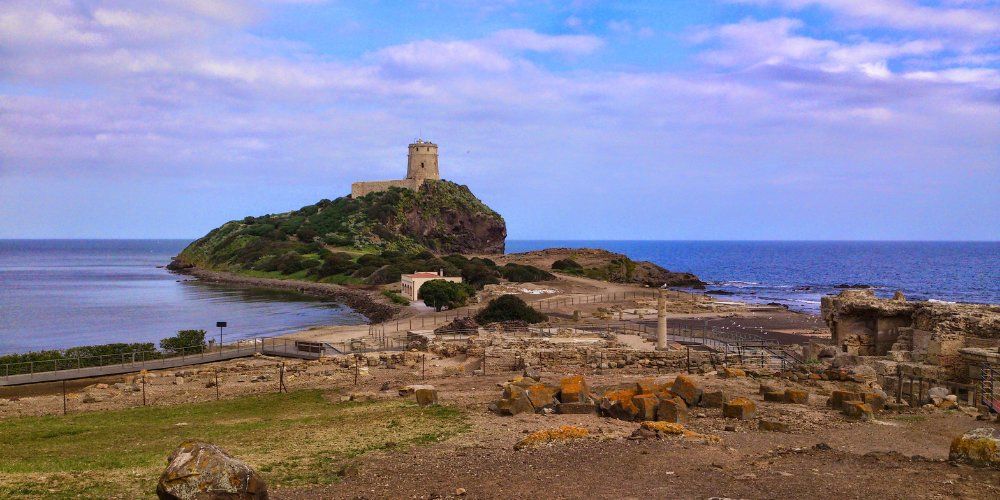
Pula is a lively coastal municipality southwest of the Gulf of Cagliari, from which it is 30 kilometres away. Pula offers the possibility to enjoy unforgettable holidays throughout the year.
It is a territory rich in natural and archaeological beauties and riches known all over the world, such as the ancient city of Nora, an archaeological site considered the pearl of the Mediterranean.
Pula offers kilometres of beautiful beaches characterised by fragrant pine forests.
For lovers of trekking, Pula offers a wild hinterland to be experienced while discovering suggestive forests where you can spot majestic and rare animals.
Pula is also a perfect location for weddings, in fact, it is a destination wedding destination famous throughout Sardinia.
Torrel del Coltellazzo - Nora - Sardinia - Ph. Credit: EcilaAlice - Own work
6. La Maddalena Archipelago
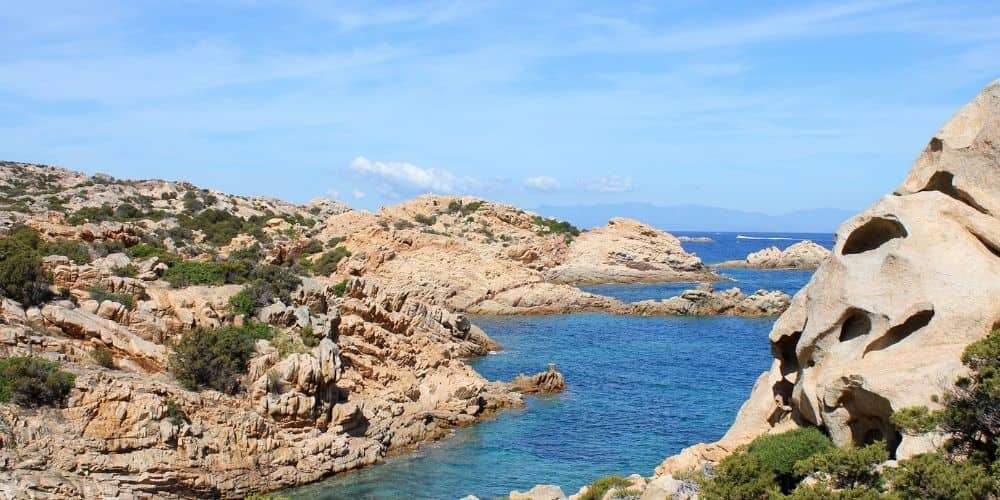
The Maddalena archipelago, declared a national park in 1994, is one of the most beautiful and unspoilt areas in Sardinia.
It is located off the Costa Smeralda, on the northern coast of Sardinia, and is composed of seven major islands (La Maddalena, Caprera, Budelli, Santo Stefano, Santa Maria, Spargi, Razzoli) and countless smaller islands, all with beautiful beaches and crystal clear waters.
The island of La Maddalena is the only inhabited centre of the archipelago. Ferries to the island depart daily from Palau and once you arrive on the island you can visit the village and the beautiful fine sandy beaches.
We could mention many beaches in the archipelago but the truth is that they are all wonderful and unmissable. The best way to appreciate the beauty of the archipelago is to take part in an organised day trip, by boat.
Normally the one-day tour includes a visit to the island of Spargi, the island of Budelli with the famous Pink Beach, the island of Santa Maria, Caprera and La Maddalena.
The tour gives you the opportunity to see and spend time in the small coves and beaches, which can only be reached by sea.
Sea lovers will find their paradise here!
5. Orgosolo: the village-museum
.jpg)
Let's leave the sea and go to Orgosolo in the heart of the province of Nuoro, in the centre of Sardinia, in the so-called "Barbagia di Ollolai".
We are far from the sea, in the deepest and least known Sardinia!
The village, at about 620 metres above sea level and immersed in the spectacular landscape of Supramonte, has about 4500 inhabitants and is defined as a museum town for its murals that decorate the houses of the historical centre and for its ancient traditions.
Walking through the historical centre, you can admire a heritage of 150 works by local and international artists, which speak of politics, culture, dissent and popular struggles, social justice, daily life and traditions.
Orgosolo is also the home of 'canto a tenore', a Sardinian choral singing style of great importance in the local tradition and a UNESCO Intangible Cultural Heritage.
There are also some interesting cultural events, such as sa Vardia 'e mes'Austu, a wild horse race that takes place in mid-August and Gustos e Nuscos, an event of typical products and local handicrafts, that takes place in mid-October.
On this occasion you can taste 'sa purpuzza', an ancient meat recipe!
4. The Gulf of Orosei and its splendid beaches
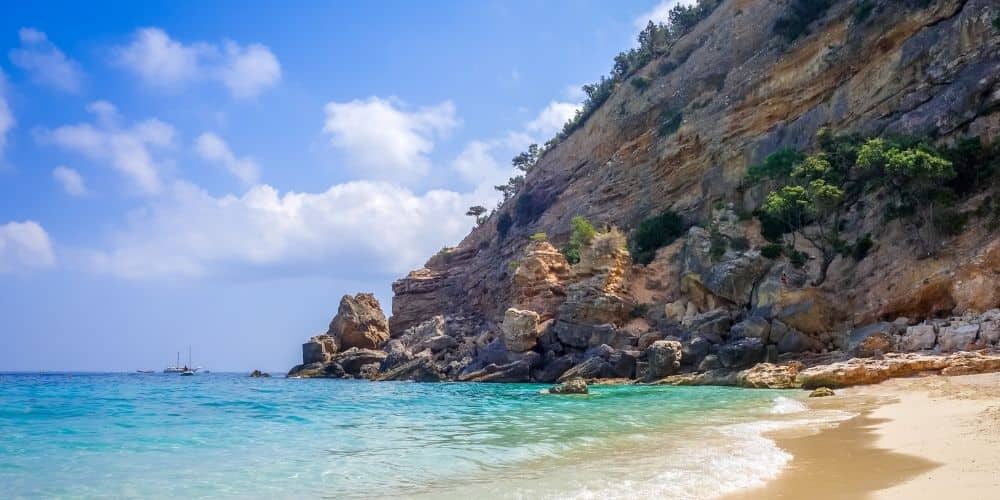
On the central-eastern coast of the island, halfway between Olbia and Arbatax, we have the beautiful Gulf of Orosei.
This area, which for centuries was only accessible by sea, is characterised by sandy beaches and coves, overhung by imposing limestone walls.
Many rare animal and plant species live here and for this reason the area is protected by the National Park of the Gulf of Orosei and Gennargentu, a nature reserve rich in archaeological sites, which is worth a special visit for its extension.
The beaches in the Gulf of Orosei are all wonderful.
Not to be missed are Cala Goloritze, Cala Mariolu and Cala Luna, 3 beaches listed in the top ten most beautiful beaches in Italy for their crystal-clear sea and wild, unspoilt nature.
See our article on the Gulf of Orosei, its beautiful places and cultural attractions!
3. The Bay of Chia
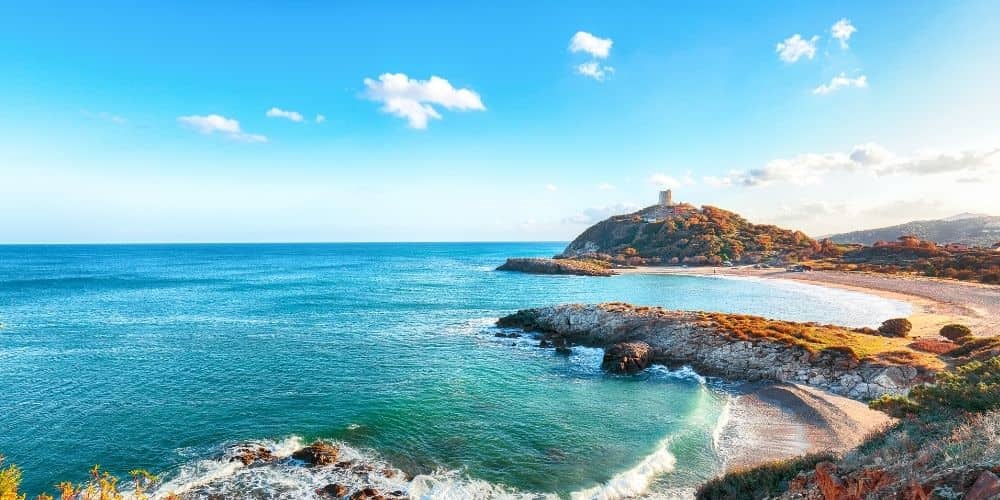
Chia Bay, located about an hour's drive from Cagliari, is one of the most enchanting coastlines in southern Sardinia and has been awarded both the 5 sails and the title of most beautiful beach according to Legambiente.
The landscape is made unique by the beautiful crystal clear sea, the fine pink sand dunes and the presence of flamingos in the pond nearby, which turns pink at sunset.
Once in Chia, you will have only one wish: dive into its splendid sea!
One of the most beautiful beaches is Su Giudeu, a white sandy beach surrounded by junipers and with a small island in front of it, which can also be reached on foot.
Near Su Giudeu is Cala Cipolla, a small beach of fine sand, surrounded by pink granite boulders, hidden by hills and sheltered from the winds.
Also worth seeing is Sa Colonia, a beach about 1 km long that heads towards Monte Cogoni. It is characteristic for the presence of small sand dunes and for the pond located in its westernmost part.
Near Sa Colonia we find Cala del Morto, a beach of fine sand enclosed by pink granite rocks with Mediterranean pines and junipers behind it.
The beauty of this bay and its nature will leave you speechless.
2. Cagliari
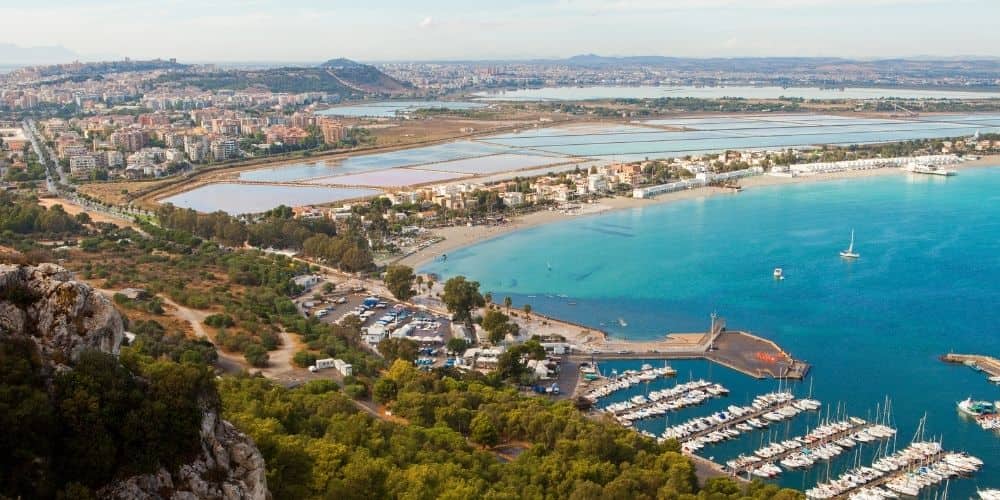
Cagliari is the largest city on the island and the centre of Sardinia's political, economic, tourist and cultural life.
The city offers interesting historical districts to discover.
First of all the ancient medieval quarter of Castello, situated on the hill above the city and guardian of Cagliari's millenary history and tradition.
Here you will find the Bastion of San Remy, one of the symbols of the city, with the Terrace of Santa Caterina from which you have a beautiful view over the city and the port.
The districts Stampace (district of bourgeoisie and merchants), Marina (district of fishermen and sailors) and Villanova (district of shepherds and farmers), are also very interesting.
Important attractions include the 13th-century Cagliari Cathedral, the Basilica of Our Lady of Bonaria, the Roman Amphitheatre and the National Archaeological Museum.
In Cagliari you can also relax on the beach and take a walk in nature.
The long coastline of Poetto offers beautiful white beaches and is dominated by the Sella del Diavolo promontory, which can be reached by a nature trail that takes about an hour and offers a beautiful view of the entire city and coastline.
Near Poetto beach there is also the Molentargius-Saline protected oasis where you can admire flamingos.
1. Gorropu Gorge
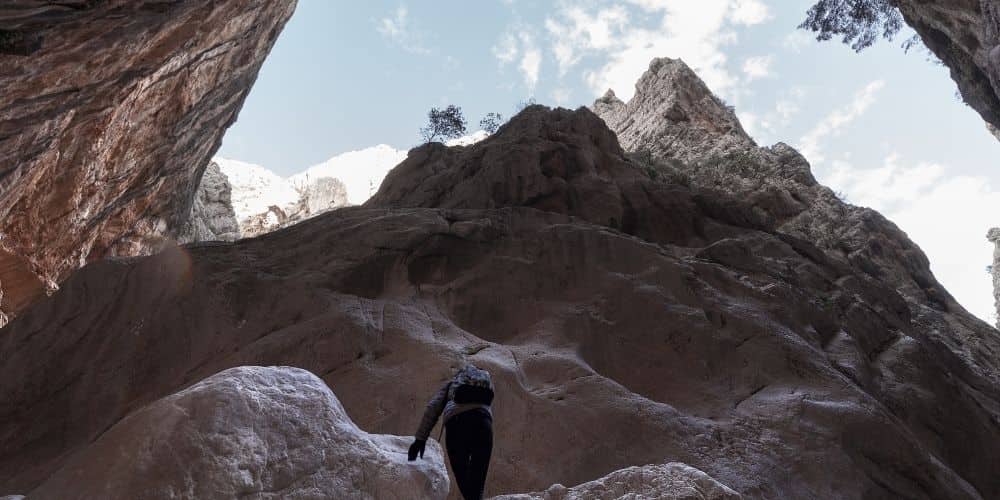
In the centre of Sardinia, between the regions Barbagia and Ogliastra, in the mountainous complex of Supramonte, we have the deepest canyon in Italy: the Gorropu gorge.
The gorge, created by the waters of the Flumeneddu river, is a monument of nature and is located in one of the wildest and most unspoilt areas of the region.
You can access the canyon only on foot, with expert guides and after several hours of walking.
The path, which runs along the river bed and where you can see boulders, caves, cliffs, dolines and nuragic settlements, is several kilometres long and is divided into three levels of difficulty: easy, medium and difficult.
The flora and fauna are typical of the area, with various endemic species, holm oaks, junipers, thousand-year-old yews and specimens of mouflon and golden eagles.
Gorropu is the ideal place for trekking lovers. It is a masterpiece of nature, a world apart!
About the author
Written on 22/08/2021


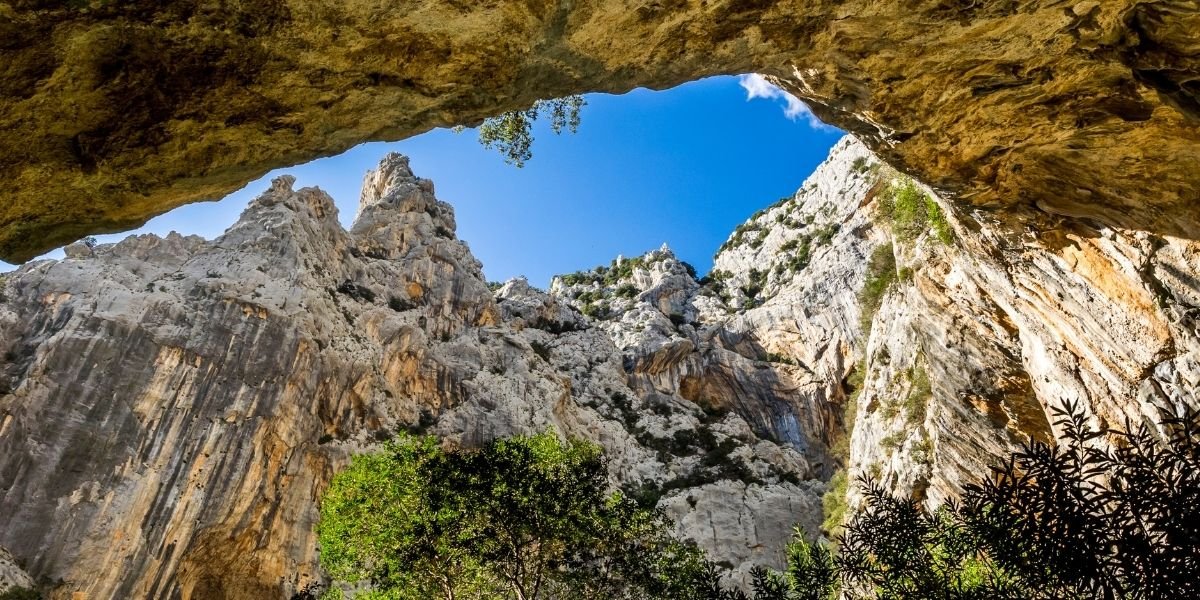
Ilaria Capatti
What to see and do in Sardinia: discover 10 unmissable places!